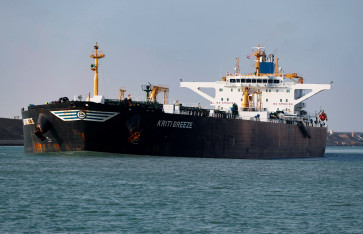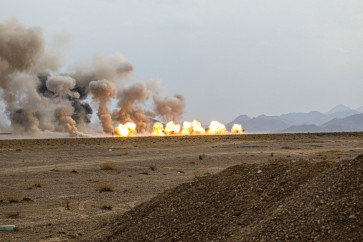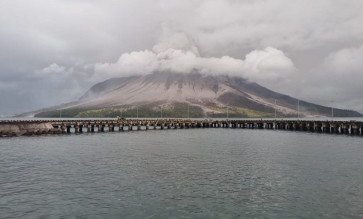Haze making its annual comeback in Sumatra
Fire is raging through more areas in Sumatra and Kalimantan as the dry season has worsened in the regions
Change Size

F
ire is raging through more areas in Sumatra and Kalimantan as the dry season has worsened in the regions.
The number of hot spots in Sumatra has dramatically increased to 158, with Riau ranking first with 80 hot spots, followed by Bangka Belitung (35), South Sumatra (20), North Sumatra (11) and 12 scattered in other places.
Residents of Duri, Mandau district, Bengkalis regency, Riau, claimed they could smell smoke from land and forest fires on Monday morning.
“I was woken up by the hot weather after midnight during a blackout. A few moments, later I realized there was a strong smell of smoke in the house,” said Duri resident Syukran Koto.
People voiced fear over a repeat of the haze disaster and news of haze spread quickly through social media.
“Oh my God, the haze has returned, and I feel sore in my nose and throat,” wrote Yuli Adi on his Facebook account. Local Peni Wulandari posted “The smell of haze is very disturbing” on her social media account.
A number of areas in Tanah Putih district, Rokan Hilir regency, were also shrouded in dense haze from Monday morning as a result of residual land fires in Putat village, Tanah Putih district, and Siarang-Arang village, Pujud district.
According to local Sany Panjaitan, firefighters had yet to put out a land fire covering more than 20 hectares in Putat that he was keeping an eye. “In addition to shrubs, the fire also raged through an oil palm farm with trees aged around two years,” he said.
Hot spots have appeared in Jambi province over the past several weeks, with low rainfall exacerbating conditions.
“Five of the 158 hot spots detected in Sumatra are in Jambi,” said Jambi Sultan Taha BMKG head Nurangesti.
Nurangesti said that based on Terra and Aqua satellite monitoring on Monday, the five hot spots were respectively located in Muaro Sebo Ulu district, Batanghari regency; Muaro Sebo district, Muaro Jambi regency; Senyerang district, West Tanjungjabung regency; Geragai district, East Tanjung jabung regency; and Tebo Ulu district, Tebo regency. “The dry season in Jambi will continue until September,” said Nurangesti.
The number of hot spots detected in West Kalimantan increased dramatically over the weekend, followed by haze from evening until morning. If on Tuesday only 17 hot spots were detected, the number rose to 165 over the weekend.
Pontianak’s Supadio BMKG station told The Jakarta Post on Sunday that satellite images showed the 165 hot spots were spread across 11 of the 14 regencies and cities across the province.
Pontianak resident Marti, 35, said the smell of smoke, like the smell of burning dry leaves and wood, was quite strong at night and early in the morning.
“I anticipate haze by always wearing a mask when outdoors, and I minimize outdoor activities at night. My 7-year-old son came down with an acute respiratory infection early last week and is still suffering,” said Marti.
The government plans to build at least 6,000 deep wells in peatland areas prone to fire by the end of this year to anticipate next year’s dry season, which is predicted to be more intense than this year’s.
“We’re lucky with this year’s dry season because it has been wetter than usual. Next year the dry season will return to normal, so what should we do to reduce land and forest fires? The answer is deep wells,” Peatland Restoration Agency (BRG) head Nazir Foead said.
Nazir said the agency planned to build the wells because they had proven effective in combating fires as well as making dry peatland wet in Riau and Central Kalimantan.
First, building a deep well is very cheap as it only costs Rp 2.5 million per well.
Severianus Endi from Pontianak also contributed to the report.









